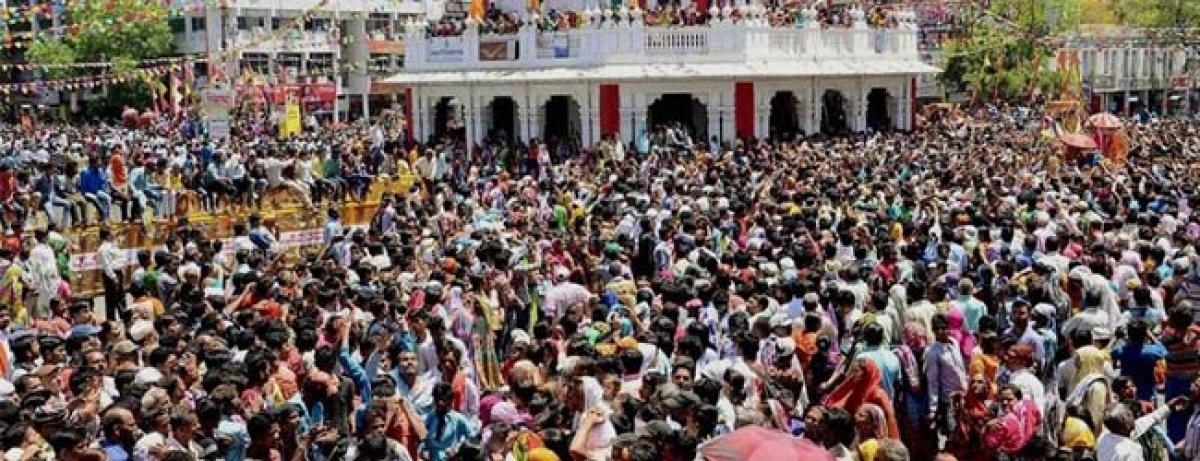Live
- Allu Arjun Released from Chanchalguda Jail, says he respects law
- Jesus is synonymous with sacrifice, forgiveness: Ponnam
- HC announces verdict in Kannada for the first time
- Uttam releases water from Nizam Sagar for Rabi crop
- TG to be Rs 84L cr economy in 10 years: Sridhar Babu
- First TGCHE, V-Cs meet deliberates on higher education roadmap for state
- 2 senior professors to join NALSAR
- Former Principal of SPW College passes away in US
- Hyderabad: Govt out to remove electric poles, transformers on roads across city
- KCR goes into huddle with State legal eagles
Just In

A group of Indian researchers is leading a global team of experts to unravel crowd dynamics during the Simhastha Kumbh in Ujjain in Madhya Pradesh using Big Data and Internet of Things (IoT) for efficient crowd management solutions.
Kolkata: A group of Indian researchers is leading a global team of experts to unravel crowd dynamics during the Simhastha Kumbh in Ujjain in Madhya Pradesh using Big Data and Internet of Things (IoT) for efficient crowd management solutions.
The 'Kumbh Mela Experiment: Measuring and Understanding the dynamics of mankind's largest crowd' aims to use Big Data and IoT (including wearable devices) for understanding crowd dynamics in mass gatherings and develop crowd management solutions particularly focusing on crowd risk.
It is led by the Indian Institute of Science (IISc), Bengaluru, along with the University of Amsterdam and various other national and international academic and industry partners and is funded by India's Department of Electronics and Information Technology (DeitY) and Netherlands Organization for Scientific Research.
"As a key component of the project, an 'Indo-Dutch Collaborative Research Camp' has been set up in Ujjain in the Kumbh Mela area for the months of April and May to carry out data collection and experimentation activities during on-going Simhasth," said IISc researcher Ashish Verma, who is the chief investigator of the project.
A core team of 45 researchers from India, the Netherlands, Russia, and Singapore will be working in the research camp, launched on Wednesday, on 20 different experiments defined under the project.
In addition, about 200 internship students from engineering and management institutes across India, including from Indore and Ujjain, have been recruited to work under this project and are carrying out their activities from the camp.
"The primary data sources/devices to be used are about 560 wearable tracking devices, 3,000 wearable lanyard devices, Go Pro cameras, questionnaire survey and the like. The secondary data sources will include cell phone data, CCTV camera data, among others," Verma said.
The experiment is supported by the Madhya Pradesh government and Ujjain administration. They have also allotted the plot of land for free to the project team to set up the camp.
The three-year project (launched October 2015) expects to come up with crowd management solutions based on Big Data analytics to improve crowd safety in religious events in India, new science of understanding crowd behaviour in large religious events leading to publications in high-impact journals and potential reference to develop similar solutions in other contexts, said Verma.

© 2024 Hyderabad Media House Limited/The Hans India. All rights reserved. Powered by hocalwire.com







